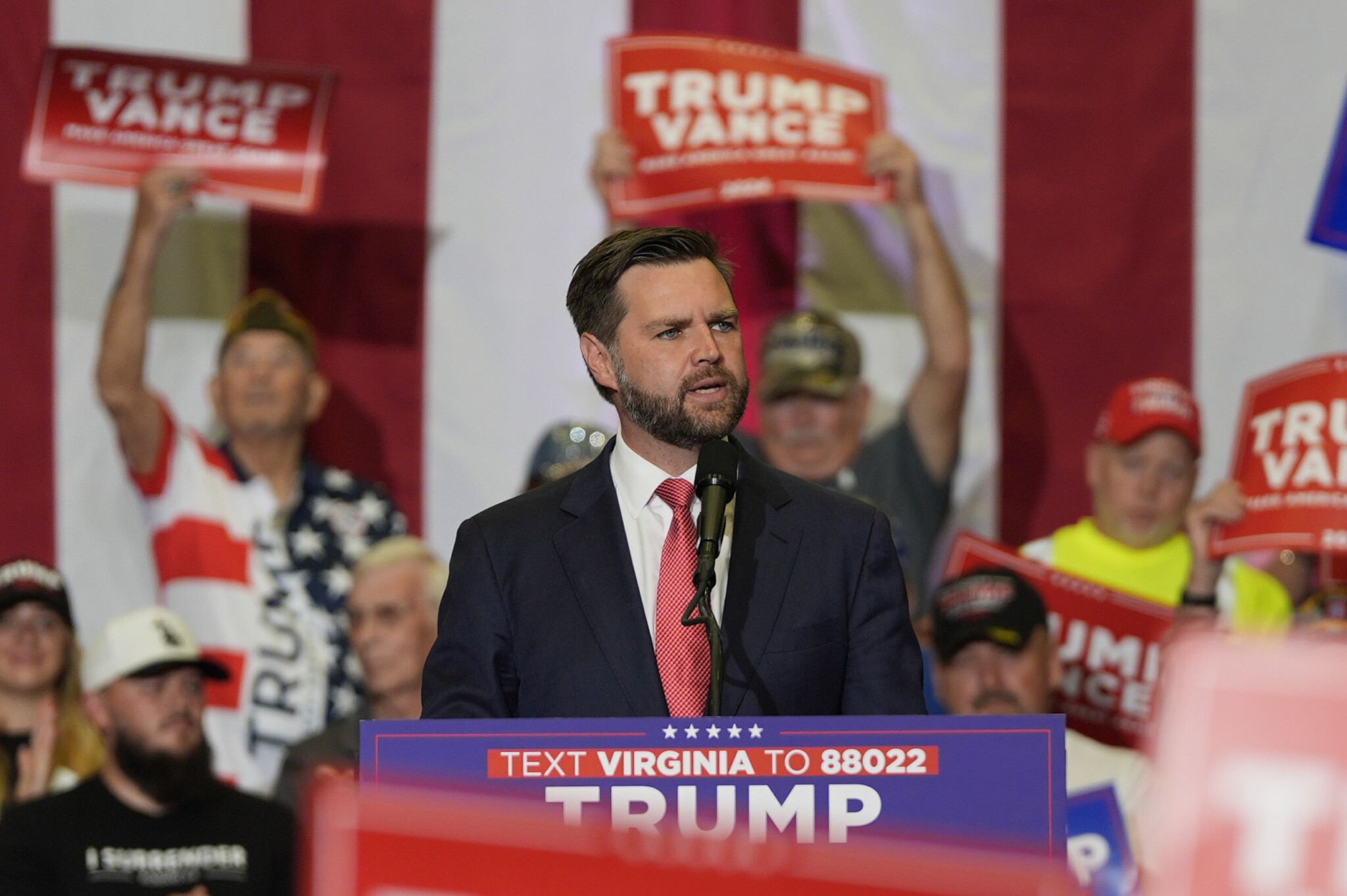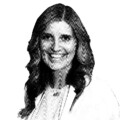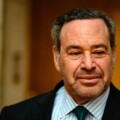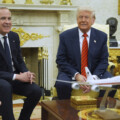Last week, mainstream media columnist-turned-Substacker Paul Wells decided to write about a phenomenon some of us have been poring over for years—America’s new right and the conservative realignment. The inciting incident was Donald Trump’s appointment of leading new right figure, bestselling author of Hillbilly Elegy, and Republican U.S. senator J.D. Vance as his running mate. It’s a good reason for Canadians to start paying attention.
Vance attended Yale Law School alongside his close friend, newly-elected Conservative MP Jamil Jivani. But more importantly, as Wells rightly points out, there are glimmers of Vance’s political beliefs in Canada’s own conservative movement. There are also some noteworthy similarities between Vance, Pierre Poilievre, and the team around him.
Wells’ analysis leads with a photo of Ronald Reagan, and it’s a good place to start. Because a lot of people have been throwing around Reagan’s name lately, and sometimes it seems like they want to have it both ways. The confusion around where Regan’s legacy fits into the Right’s realignment is emblematic of how ill-defined it remains. Was Reagan a patriotic hero of the working class, or instead the perpetrator of the worst excesses of a neoliberal economics and hawkish foreign policy, that gutted manufacturing jobs and prioritized petty battles in foreign countries over the national interest?
The new Right
It’s difficult to pin down the populist new right (or national conservatism, or whatever you want to call it) so it can help to distinguish between (1) their critique of the status quo and their vision for a new, legitimately different conservative voting coalition and (2) the development of a new public policy program that responds to the challenges of the status quo and appeals to a new voting coalition. Much of the former comes down to political priorities, themes, and strategy. Much of the latter comes down to economic theory. But, as a whole, none of it is new.
Wells is correct that Poilievre and Vance broadly start from the same core insight (my point #1 above)—that the business and cultural elite have completely lost touch with the wants and needs of regular people. Both men also run that pointed criticism through a similar political analysis—that with the right message and the right messenger, conservatives can build a young, multi-ethnic, working and middle-class voting coalition. However, that doesn’t mean Poilievre and Vance are going to end up in the same place. When it comes to public policy solutions (my point #2), and the theories and principles that underpin them, Poilievre and Vance actually differ quite starkly.
So, if they start from similar critiques and want to build similar coalitions, where do they depart? Follow their lines of argument, from investigation, to diagnosis, to prescription, and the fork in the road becomes clear.
As Wells rightly points out, Poilievre and Vance are quick to blame big business for the failure of today’s economy to work for working people. They blame Wall Street, Bay Street, and the elite corporate interests that drive them for everything from the opioid overdose crisis, to divisive woke culture, to the mismatch between the high cost of living and slow-to-grow wages. But where do they think corporate interests have run astray? How did it all go so wrong?
The Poilievre approach
For Poilievre, the heart of the problem is the insidious relationship between big business and big government. Poilievre believes Canadian businesses aren’t competing, innovating, or building enough, which is then leading to higher prices for consumers and lower wages for workers. Usually, he points out, it’s because they’re in cahoots with government. These companies rent seek through regulatory protection or direct subsidies in exchange for boosting left-wing policy and ideology (like net zero and DEI). For Poilievre, the solution is for government to get out of the economy and for business to focus on what it does best, driving growth, productivity, higher wages, and lower prices. In other words, despite Wells’ insistence to the contrary in another of his essays, Poilievre fundamentally believes in making the economic pie bigger.

Republican vice presidential candidate Sen. JD Vance, R-Ohio, speaks at a campaign rally at Radford University, Monday, July 22, 2024, in Radford, Va. Julia Nikhinson/AP Photo.
The J.D. Vance approach
For Republican vice president nominee J.D. Vance, it often seems like the problem he has with capitalism isn’t that it’s gone wrong, but that it’s working just as it was intended to, to the detriment of working class Americans. Vance and his intellectual compatriots at economist Oren Cass’ American Compass think tank aren’t just critical of the excesses of woke capital, they’re critical of neoliberal economic policy in its purest form. They reject much of the free trade orthodoxy, calling for tariffs not just on goods from China, but on American imports from all over the world. Vance’s team is critical of Trump’s first term corporate tax cuts and they think government has a revenue problem as much as it has a spending problem. They want a robust industrial policy which, yes, they want to decouple from Biden’s preference for green energy, but they still want to pick winners and losers. In other words, Vance seems as though he really does just want to focus on how to split up the economic pie.
This is a far cry from Poilievre’s plan to usher in growth, by removing gatekeepers and unleashing the economy in whatever direction the freest version of the market dictates.
And that’s to say nothing of Vance’s isolationism (or foreign policy realism, if you prefer), for which Poilievre may have more empathy than his Cold War era colleagues, but which is far more Russia-sympathetic than Canada’s Conservatives (or Canadians in general) are comfortable with. Overall, the differences seem greater than the similarities.
Nevertheless, they shouldn’t be overstated.
Time will tell.
Poilievre’s critique of corporate Canada is not just empty rhetoric. He’s not secretly a Laurentian snob, waiting to cozy up to big business once he’s done hoodwinking voters with his fake folksy charm. The Conservative leader honestly believes Canadian companies are fat and lazy, focused on the wrong things, and too reliant on government protection and taxpayer money. He really does depart from an older generation of conservatives who placed more trust in the country’s institutions. He really is building a voting coalition that draws in new voters, not just from the Liberals, but from the NDP as well.
As for Vance, where he is now might not be all that reflective of where he’ll end up. Practical politics and the demands of governing can often create room for nuance. After all, who’s more flexible than Vance’s top-of-the-ticket running mate? It’s hard to imagine the Oren Cass-inspired policies surviving fully formed in an administration led by a guy who recently speculated about making former JPMorgan Chase CEO Jamie Dimon his treasury secretary.
Perhaps the best way to analyze the similarities and differences between Poilievre and Vance is to return to President Reagan, one of the masters of making principled policy appealing in practical political terms. As Fred Bauer put it in National Review:
“For all the narratives that position Ronald Reagan as a founder of the neoliberal order, his actual record of governance shows that he was far from a doctrinaire neoliberal. He inveighed against “protectionism” but also established import quotas on Japanese automobiles. Despite his invocation of the “shining city” with a door “open to anyone with the will and the heart to get here,” the legal-immigration system was much more restrictive in his time than it is in ours; about half as many green cards were given out in the 1980s as in recent years. His version of entitlement reform involved a tax hike to make Social Security sustainable.”
Just as Poilievre is likely to have to compromise on his free-market principles to solve complex government problems and continue to appeal to his working and middle-class voting coalition, Vance is likely to have to compromise on his free-market critiques to find common ground with Trump and a temperamentally libertarian American voting coalition. Even in areas where Trump seems to match Vance’s new orthodoxy, like on tariffs, the cold hard reality of making consumer goods more expensive and the political killer that is persistent inflation might make compromisers of both Republican candidates.
What Poilievre realizes is what Reagan realized too, and what Vance could stand to remember—that even if you end up having to give some of your boats an extra boost, if you want to lift them up, you always need to start with a rising tide.









